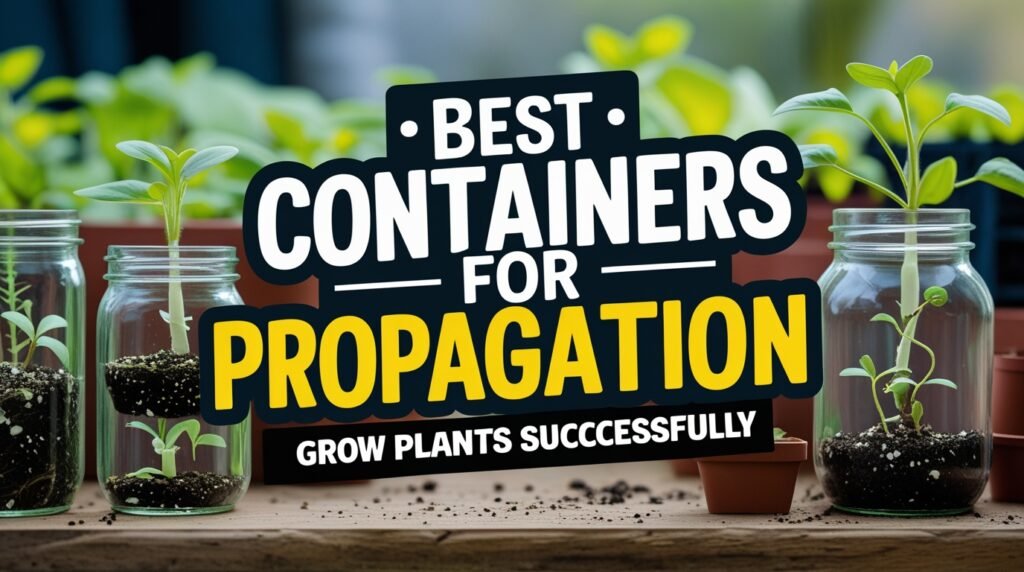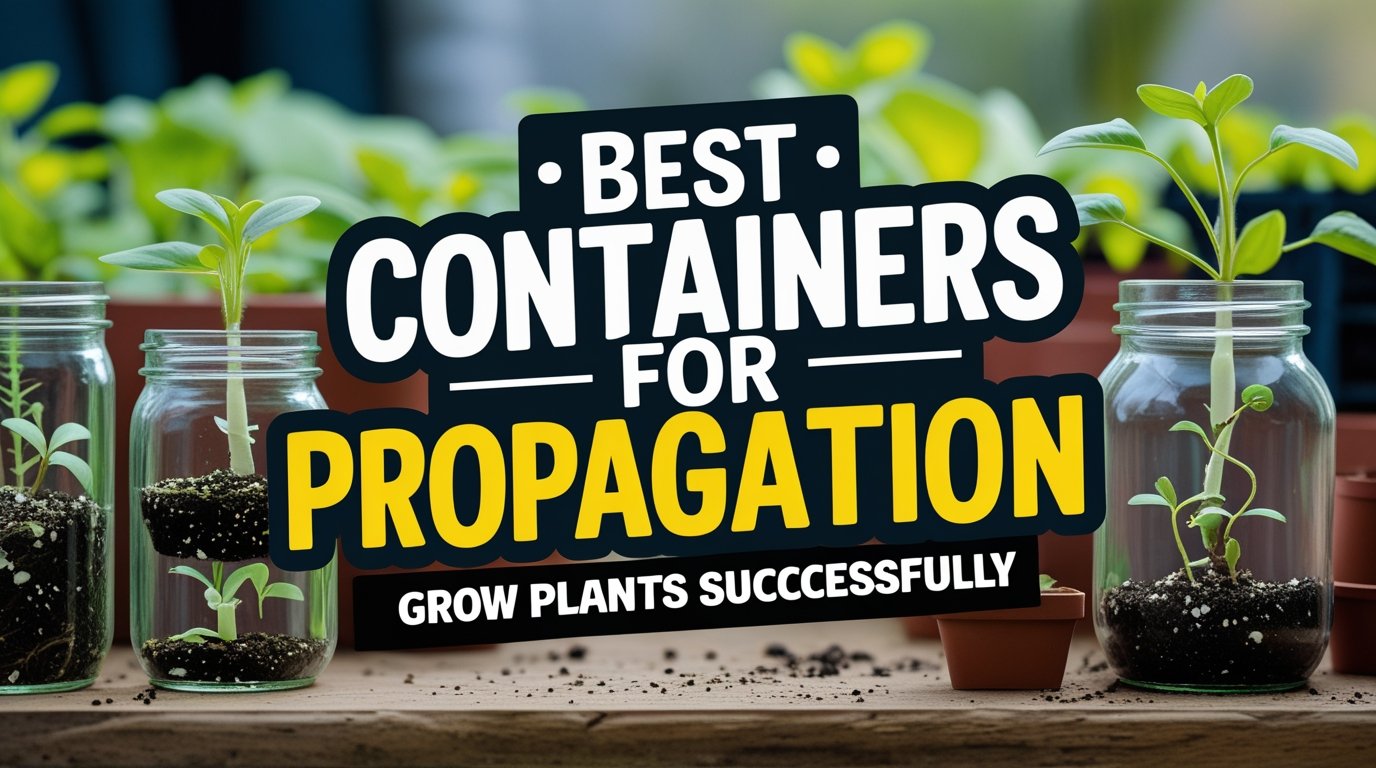Learn which containers work best for propagating plants and herbs. Discover options like glass jars, terracotta pots, and seed trays with tips from gardening expert Ashley Scott.

Hi, I’m Ashley Scott, and I’ve spent over ten years growing herbs, succulents, and indoor plants across the USA. One of the keys to successful propagation is choosing the right container. The container affects how roots grow, how moisture is retained, and how easily your plants thrive.
In this guide, I’ll explain the best containers for propagation, how to use them, and tips for keeping your cuttings healthy.
Why Container Choice Matters
The container you select determines:
- Root development and plant stability.
- Moisture retention or drainage.
- Ease of monitoring plant growth.
The wrong container can cause root rot, stunted growth, or slow propagation. Using the right container ensures your herbs, succulents, or indoor plants get the best start.
For an in-depth guide, visit the Royal Horticultural Society propagation guide.
Top Containers for Propagation
Here are the most effective options I recommend based on my gardening experience:
1. Glass Jars
- Perfect for water propagation of herbs or succulent cuttings.
- Transparent walls allow you to monitor root growth.
- Works well for mason jar plants and indoor herb gardens.
- Clean jars thoroughly before use to prevent algae or mold.
2. Plastic Seed Trays
- Lightweight and ideal for starting multiple cuttings or seeds.
- Ensure proper drainage holes to prevent waterlogging.
- Great for herbs like basil, thyme, or chives.
3. Terracotta Pots
- Porous material prevents overwatering and encourages healthy roots.
- Small pots (2–4 inches) are perfect for cuttings.
- Works best with soil propagation of herbs, succulents, and houseplants.
4. Propagation Domes / Mini Greenhouses
- Maintain high humidity for delicate cuttings.
- Speeds up root development.
- Ideal for herbs or succulents that need stable moisture conditions.
5. Recycled Containers
- Use clean yogurt cups, old jars, or small containers with drainage.
- Eco-friendly and cost-effective.
- Works for both water and soil propagation.
Tips for Choosing the Right Container
- Clean thoroughly to avoid diseases or algae.
- Drainage is essential for soil propagation; add pebbles or holes.
- Match size to plant; small cuttings don’t need large pots.
- Monitor growth; transparent containers help check roots in water propagation.
For more detailed tips on growing plants in jars, visit University of Minnesota Extension – Indoor Plant Propagation.
My Experience with Propagation Containers
When I started propagating succulents, I first tried deep terracotta pots. Many cuttings failed because the pots held too much moisture. Switching to small glass jars for water propagation and seed trays for soil cuttings increased my success rate by over 70%.
Now, I routinely use mason jar plants and small pots to propagate herbs and succulents indoors. The results are faster root growth and healthier plants.
Quick Tips for Success
- Start small; use containers that fit the size of your cuttings.
- Change water weekly for water-propagated cuttings.
- Avoid overwatering in terracotta or seed trays.
- Use clean scissors or shears to cut stems.
- Label your containers to track plant progress.
Recommended Resources for Propagation
- Royal Horticultural Society – Propagation Tips
- University of Minnesota Extension – Propagating Houseplants
- University of Illinois Extension – Indoor Herb Propagation
- Iowa State University – Growing Plants from Cuttings
- Gardening Know How – Propagation Techniques
Using the right containers dramatically improves your propagation success, whether you’re starting herbs in jars, succulents, or other houseplants. With proper care, attention to drainage, and the correct container, your cuttings will develop healthy roots and grow into strong plants.
If you enjoy propagation, you can also explore my Succulent Propagation guide for step-by-step techniques and tips.

Leave a Reply